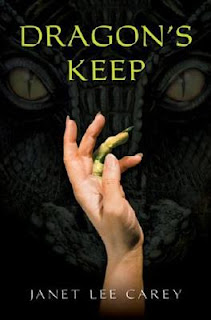SECONDLY
Having one story is dangerous, but where stories begin is at least as important. Adichie said,
One of the ingredients, that made Alex Haley's Pulitzer prize winning book, Roots: The Saga of an American Family (1976), so powerful was where it began. It did not begin with a whip, but with a birth--the birth of a child into the arms of a family in the strength of their life and people. It was the foundation of all that followed because the reader knew exactly what Kunta Kinte had lost. We did not pity him so much as we engaged in his impossible struggle to hold on to his identity in the face of impossible odds. Do you see the difference? In this case, it is respect versus pity.
Not every story needs to begin in the mists of time, but we do need stories that establish a foundation for a holistic picture of people, both in history and contemporary life. For example, when studying the Iroquois, begin with the Six Nations before adding a story of first European contact, then follow with a contemporary story. This is also a great opportunity to pair nonfiction with fiction. In reality, you will have to do this, as in many cases all the stories we need have not yet been written.

Or how about beginning a study of Latin America with a pre-contact story. No Europeans. Chris Eboch’s The Well of Sacrifice takes place at the height of Mayan culture. Although this culture declined long before European contact, Mayan descendants are still around today. Besides a good background for learning about contemporary Mayan life, it's a thrilling story!
FIRSTLY
“The Palestinian poet Mourid Baarghouti writes that if you want to dispossess a people, the simplest way to do it is to tell their story and to start with, “secondly.”ROOTS
One of the ingredients, that made Alex Haley's Pulitzer prize winning book, Roots: The Saga of an American Family (1976), so powerful was where it began. It did not begin with a whip, but with a birth--the birth of a child into the arms of a family in the strength of their life and people. It was the foundation of all that followed because the reader knew exactly what Kunta Kinte had lost. We did not pity him so much as we engaged in his impossible struggle to hold on to his identity in the face of impossible odds. Do you see the difference? In this case, it is respect versus pity.
"Start the story with the arrow of the Native American, and not with the arrival of the British, and you have an entirely different story. Start the story with the failure of the African state, and not with the colonial creation of the African state, and you have an entirely different story.” --Adichie
Not every story needs to begin in the mists of time, but we do need stories that establish a foundation for a holistic picture of people, both in history and contemporary life. For example, when studying the Iroquois, begin with the Six Nations before adding a story of first European contact, then follow with a contemporary story. This is also a great opportunity to pair nonfiction with fiction. In reality, you will have to do this, as in many cases all the stories we need have not yet been written.

FIRSTLY
"Stories matter. Many stories matter . . . . when we reject the single story, when we realize that there is never a single story about any place, we regain a kind of paradise." --AdichieWhen we lay a foundation for understanding, root it in history, we see people in sharper focus. Many stories inform the way we think about people, how we interact with them. Our world is enlarged, vibrant, becomes for us a wonder, "a kind of paradise."
Michele
Hathaway is a writer and freelance editor. She has an M. A. in Social
Anthropology and has worked in libraries in California, New Mexico, and
Pennsylvania. She writes stories set in culturally diverse, historical and
contemporary periods.


























